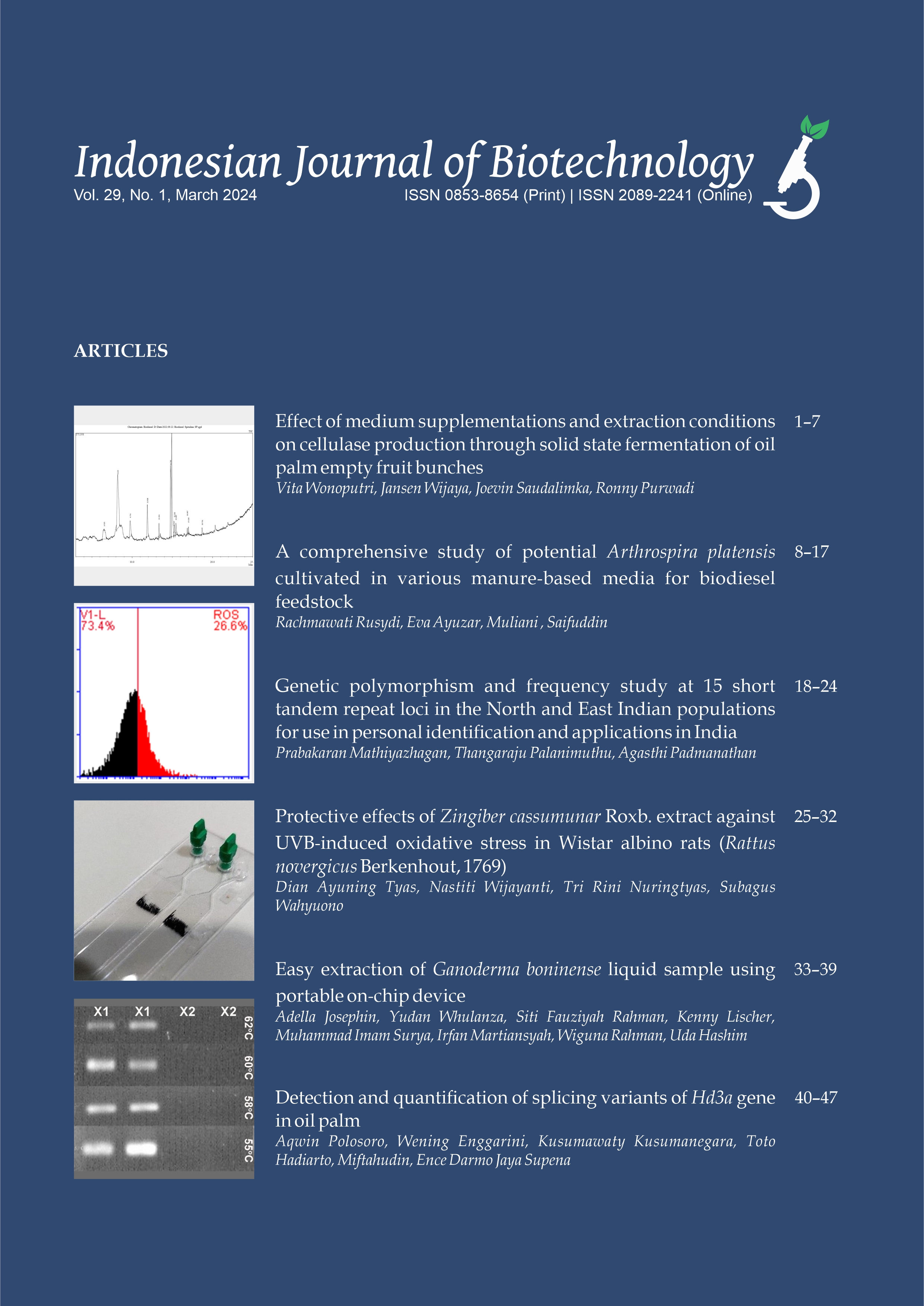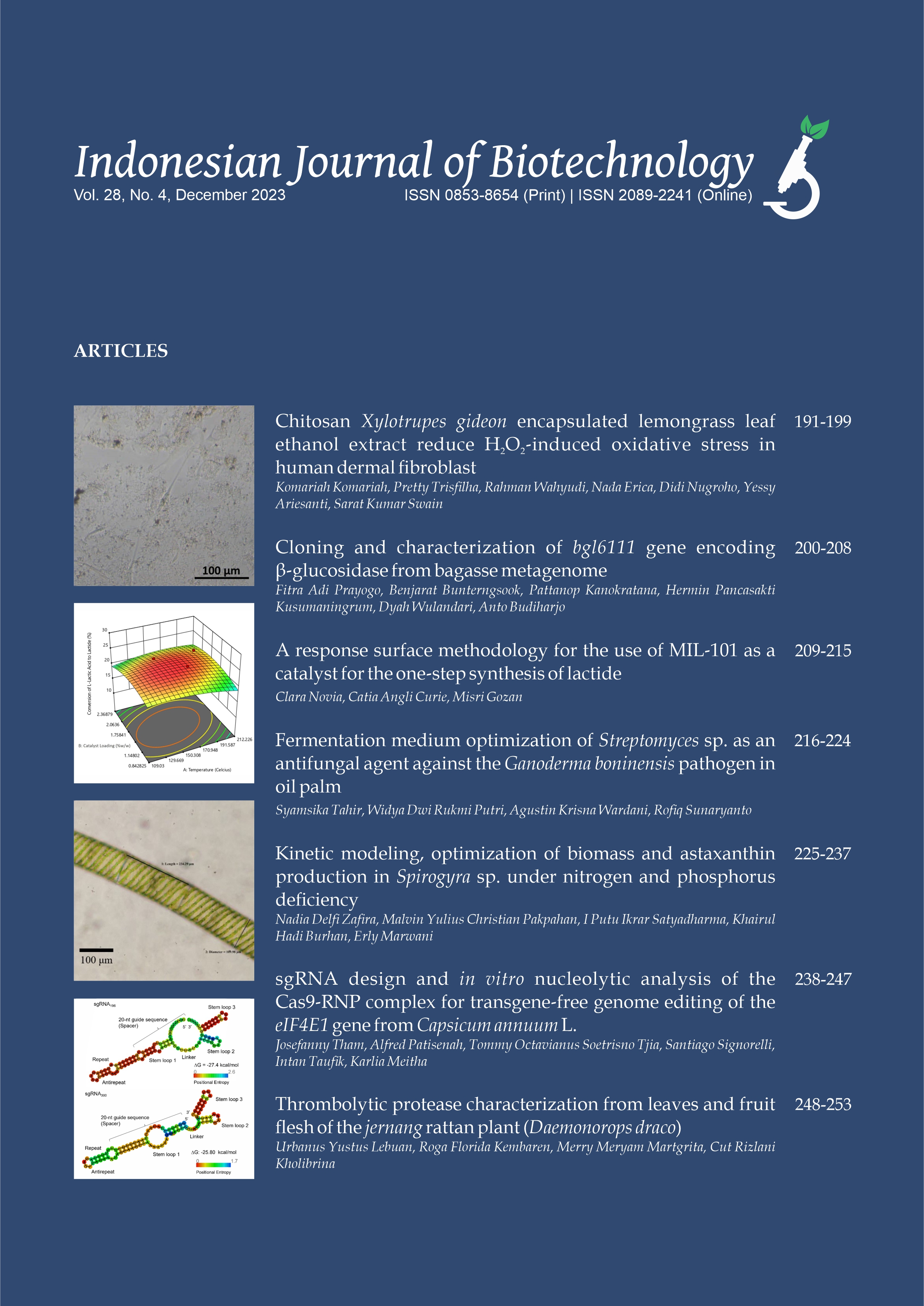Comparison of Cytotoxic and Antiproliferative Effects of Benzylidenecyclopentanone Analogues of Curcumin on RBL-2H3 Cells
Agung Endro Nugroho(1*), S. Sardjiman(2), Kazutaka Maeyama(3)
(1)
(2)
(3)
(*) Corresponding Author
Abstract
Curcumin is a natural yellow pigment isolated from the rhizomes of Curcuma longa L. (turmeric), and has several pharmacological effects and no toxicity in both in animal and human clinical study. However, the problem of curcumin is its stability because of its active methylene moiety. Modification of this moiety to cyclopentanone is expected to increase the stability. Previous study reported that benzylidenecyclopentanone analogues of curcumin showed inhibitory effect on histamine release from RBL-2H3 (rat basophilic leukemia) cells, a tumor analog of mast cells. One of them, the hydroxy-methoxy analog (PGV-0), showed more potent effect than that of curcumin. In the present study, some benzylidenecyclopentanone analogues of curcumin were evaluated for their effects on the viability and proliferation of RBL-2H3 cells. Viable cells were counted under a light microscope with a cells-counting chamber or using the cell viability reagent WST-1. The results showed that mast cell viability and histamine content were not affected by curcumin and benzylidene cyclopentanone for 30 min incubation, however, impaired for overnight incubation. The hydroxy-dimethyl benzylidene analog (PGV-1) strongly decreased the mast cells viability for overnight incubation, and its effect was highest among the other analogues. In the proliferation study, this compound also strongly inhibited the proliferation of mast cells, whereas curcumin and hydroxy-methoxy benzylidene analog inhibited the proliferation slightly. There were no inhibitory effects on mast cells proliferation treated by dibenzylidene; dihydroxybenzylidene; and hydroxy-diethylbenzylidene cyclopentanone.
Keywords : viability, proliferation, curcumin, benzylidene cyclopentanone, RBL-2H3 cells
Keywords : viability, proliferation, curcumin, benzylidene cyclopentanone, RBL-2H3 cells
Full Text:
PDFArticle Metrics
Refbacks
- There are currently no refbacks.
Copyright (c) 2015 Indonesian Journal of Biotechnology









